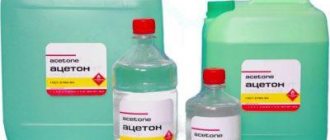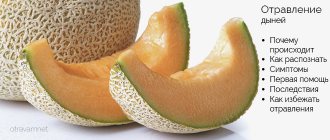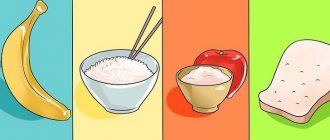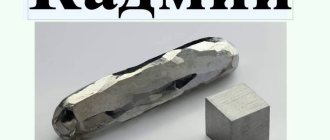Substance abuse in the modern sense was first recorded in the United States in 1960. The police received the first alarming report of teenagers who inhale gaseous substances, driving themselves to drug intoxication. Gasoline, solvents, varnishes, paints - in fact, any household chemical liquids were suitable for such dangerous entertainment. Substance abuse came to the USSR a little late: even under the conditions of the Iron Curtain and the accompanying information isolation, Soviet teenagers came up with unconventional ways of using gasoline, stain removers, dichlorvos and, of course, the legendary Moment glue.
Until the mid-1980s, substance abuse in the USSR was not widespread, and its foci were located mainly on the very outskirts and in the “dead” spots of the country. There were exceptions: for example, a real epidemic of substance abuse broke out in the Baltic states in 1975 - but even this, despite its scale, was an isolated phenomenon and could not cause a pattern. It must be said that, according to the Ministry of Health, which kept a less attentive, in contrast to the Ministry of Internal Affairs, record of “contingents of patients with substance abuse and drug addiction”, by 1955 in the USSR only 1,854 people were identified who abused chemicals and narcotic substances to the detriment of their health.
Gasoline, solvents, varnishes, paints - in fact, any household chemical liquids were suitable for such dangerous entertainment.
VIKTOR PELEVIN
"Generation P"
“If cocaine was sold in pharmacies for twenty kopecks per gram as a rinse for toothache, only punks would snort it - as, in fact, it was the case at the beginning of the century. But if “Moment” glue cost a thousand dollars per bottle, all Moscow’s golden youth would eagerly sniff it, and at presentations and receptions it would be considered refined to spread a volatile chemical smell around oneself, complain about the death of brain neurons and retire to the toilet for a long time.” .
Substance abuse: what is it?
Substance abuse refers to a person’s mental and physical dependence on toxic (i.e., poisonous) substances. From a medical point of view, it is no different from drug addiction. Differentiation takes place only at the legislative level: a patient is recognized as a drug addict only if he uses any substance from the official list of narcotic substances.
The phenomenon of substance abuse itself became known at the beginning of the last century, primarily among medical workers. The ether, which was used to anesthetize patients, led to severe addiction among doctors and nurses, who inhaled the substance almost constantly.
Afterwards, the abuse of harmful substances began to spread among bohemians. Popular pop and rock performers often committed the sin of using airwaves to improve their vocal abilities. This practice had an immediate impact on health.
By the beginning of this century, substance abuse had become extremely popular among young people. Among the causes of the epidemic:
- Negligent attitude towards one’s health, the idea that any addiction is curable;
- The desire to try everything, because “there is only one life”;
- Considering yourself an original person who needs unusual leisure;
- Peer influence;
- An escape from real life problems. Drugs act as a kind of “antidepressant”.
In this video, drug addict Alyosha sniffs glue, look at the extent to which he has degraded as a person:
Treatment of poisoning
The victim is taken to the toxicology department in serious condition.
Poisoning of any severity in children and pregnant women requires medical intervention.
Medicines
In the hospital, doctors treat paint poisoning depending on the severity of the patient’s condition:
- intravenously infused solutions that remove toxic components from the blood and organs;
- carry out forced diuresis using diuretics;
- if necessary, medications are administered to improve cardiac activity;
- liver damage is treated with hepatoprotectors (Essentiale, Silibor, Karsil);
- immunomodulators and vitamins are used.
Further drug therapy is prescribed by the clinic doctor under the supervision of tests.
Professional builders use plasmapheresis for chronic poisoning with kidney damage.
Folk remedies
For paint poisoning, medicinal herbs are used:
- Horsetail infusion helps with kidney damage. Prepared in a water bath. Take 1 tbsp per glass of water. l. dry grass. Leave for 15 minutes. Take 50 ml three times a day before meals for 2 weeks.
- Licorice decoction is prepared by boiling. Measure 20 grams of plant root per half liter of water. Keep on low heat for a quarter of an hour. Should be taken after filtering, 100 ml three times a day for 2 weeks.
- The easiest way to prepare an infusion of knotweed is in a thermos. Place 4 tbsp per liter of boiling water. l. raw materials. Leave for 2-3 hours. After straining, drink half a glass 3 times a day. The course of treatment is repeated after a month.
Herbal medicine methods significantly help remove toxic substances from the body.
What do drug addicts snort?
There are many classifications of volatile substances that cause toxicological dependence. Let's look at some of them.
The typology of harmful substances by product category is widespread. Within its framework there are:
- Solvents
are volatile substances for industrial and household use that are used as drugs; - Gaseous substances
- nitrous oxide, propellants (found in hairspray), chlorofluorocarbons; - Medical anesthetics
- among them, the most popular is diethyl ether, the intoxication from which is several times stronger than alcohol.
According to the classification according to their chemical composition, toxic substances are divided into:
- aliphatic hydrocarbons (propane, butane, petroleum products: gasoline and kerosene);
- aromatic hydrocarbons (xylene and toluene);
- ketones (mostly acetone, which is used in nail polish removers);
- haloalkanes (hydrofluorocarbons, chlorofluorocarbons, trichloroethane, trichlorethylene, chloroform).
Terminology [edit | edit code ]
The term “substance abuse” is rarely used in world medicine. This concept is used mainly in the post-Soviet space and in France (French toxicomanie). The International Classification of Diseases, Tenth Revision (ICD-10) and the Diagnostic and Statistical Manual of Mental Disorders do not use this term. In the ICD-10 version adapted for use in Russia, substance abuse is included in the diagnosis of “dependence syndrome” (F1x.2), and acute intoxication (intoxication) in substance abuse is included in “acute intoxication” (F1x.0) [3]. In Russia, in order to indicate substance abuse, when making a diagnosis, the Russian letter “T” is added to the code, for example F18.30T for the diagnosis of substance abuse with uncomplicated withdrawal syndrome from volatile solvents.
Signs of substance abuse
Indulging in toxic substances very quickly turns into a rather serious illness. Among its first symptoms:
- The patient prefers to use harmful substances in private;
- Increasing the dose size;
- Shift to daily “bouts” of inhaling toxins;
- An unusually harsh reaction towards those who try to interrupt the inhalation process.
For strangers, especially for parents, it is extremely necessary to know the external signs of a substance abuser:
- Specific odors from the clothes and skin of a teenager;
- Tubes of glue or rags with a strong smell of solvent or gasoline were found in the pocket;
- Burns on the skin, rash, redness of unknown origin;
- Loss of interest in food;
- Cough;
- Reluctance to communicate with parents;
- Speech is difficult to understand.
First aid for poisoning by paints and varnishes
Everyone should know basic measures that will help prevent poisoning from paint fumes. Forewarned is forearmed. For mild signs of intoxication, it is enough to take self-help measures:
- First of all, you need to leave the room where repairs are being carried out, preferably go outside. Change clothes that have absorbed toxins. These actions will stop further vapor absorption.
- To relieve the condition, rinse the damaged body segments and eyes with tap water. Rinse your mouth.
- If you feel nauseous, drink water and induce vomiting. Then take enterosorbents - Polysorb, 5-6 tablets of activated carbon with water or Enterosgel.
- Toxicologists do not recommend taking a popular product - milk - in case of paint poisoning. It only makes the condition worse.
- To speed up the elimination of toxins, drink plenty of fluids in small doses: 50-100 ml every half hour.
When trying to remove varnishes and paints, do not rub the skin with a rag or washcloth . The expanded capillaries enhance the absorption of toxins. Simply remove the substance with a cotton swab.
If a person loses consciousness, call an emergency team and hold a cotton swab with ammonia to his nose. Lay the victim on his side, turning his head, bend the underlying leg at the knee joint to stabilize the position.
What happens if you sniff glue?
One of the brands of Moment glue gained narcotic popularity in the 80s of the 20th century. The consequences for addicts were very dire:
- headache;
- respiratory tract damage;
- hallucinations;
- apathy;
- in some cases - increased aggression.
Unlike “traditional” drugs, glue vapors enter the body very quickly, bypassing the circulatory system. As a result, the effect of intoxication is achieved almost instantly.
To protect teenagers from harmful addictions, governments of developed countries are introducing a number of prohibitive measures. Thirty-eight of the 50 US states prohibit the sale of instant adhesives to minors. In other regions, a teenager will not be able to purchase glue unless he indicates a reliable reason for the purchase. Sellers can face penalties ranging from a $1,000 fine to jail time for violating the laws.
What happens if you constantly sniff “Zvezdochka”?
In the Soviet Union, Vietnamese-made Golden Star balm and ointment were extremely common. Among the people, the product received the affectionate name “Star”. Used as a “cure for all diseases”:
- For a cold;
- Migraine;
- Bee and wasp stings;
- As a pain reliever;
- In the treatment of allergic rhinitis, etc.
The ointment contained aromatic oils, including clove, peppermint and eucalyptus. Thanks to this composition, “star” has become one of the favorite substances of drug addicts. However, the consequences of such a habit make themselves felt quite quickly: when the ointment vapors are inhaled, damage to the mucous membrane begins, which leads to a severe allergic reaction.
The scale of abuse of Zvezdochka virtually ceased with the collapse of the USSR. In 1986, 4 million units of goods were imported into our country, but then sales began to collapse. Nowadays this balm is sold in small quantities at prices several times higher than in Vietnam.
When and what kind of medical care is needed
Specialized medical care is required in case of severe poisoning, when antidotes and intensive care are indispensable. To do this, call an ambulance and take the victim to the toxicology department of the hospital, where qualified treatment will be carried out. It is as follows:
- The patient will be prescribed bed rest.
- Oxygen therapy will be administered.
- In case of serious breathing problems, artificial ventilation will be performed. Antibiotics and corticosteroids will be prescribed to prevent inflammation. They will administer analgesic therapy to improve breathing (caffeine, cordiamine, camphor).
- They will support the work of the heart with drips of corglucon with glucose. The pain will be relieved with an intramuscular injection of promedol.
- They will put in IVs for detoxification therapy with isotonic solution and glucose.
- As a symptomatic treatment, they will restore the functioning of the affected organs (liver, kidneys, lungs).
- Balance the diet, enriching it with vitamins C, PP, B1 and minerals (calcium, iron).
Mild poisoning after examination and positive tests does not require hospitalization and goes away in 2-3 days. Chronic cases take a long time to treat.
Inhalation of gasoline vapors
Gasoline holds the top spot among drug addicts. The secret to this is quite simple: in industrialized countries, almost every family owns a car, which is why children can easily access fuel. In addition, there are no age restrictions on the sale of gasoline to teenagers.
Most often, children use a rag soaked in fuel or even a whole vessel to achieve a state of intoxication. As a rule, a few minutes of inhalation are enough, after which the following reactions occur in the body:
- The upper respiratory tract is irritated, a sign of which is coughing and tickling in the throat and nasopharynx;
- Blood flow to the facial skin;
- Redness of the white of the eyes;
- Speech impairment: the drug addict is unable to string together even two words;
- Difficulties in orientation in space.
The health damage caused by gasoline is irreparable:
- Lead poisoning;
- Life-threatening respiratory depression;
- Congenital disability of children born from drug-addicted parents;
- Often the addict chokes on vomit while under the influence of drugs.
So, now you know what will happen if you sniff gasoline - the consequences for the body are catastrophic, including a drop in intelligence and injury to the nervous system. Children of drug addicts will also suffer. In terms of damage to health, this fuel can give odds to any drug.
Video: how drug addicts live
In this video, narcologist Anton Izmailov will show what happens to those who sniff gasoline or glue:
Substance abuse in the modern sense was first recorded in the United States in 1960. The police received the first alarming report of teenagers who inhale gaseous substances, driving themselves to drug intoxication. Gasoline, solvents, varnishes, paints - in fact, any household chemical liquids were suitable for such dangerous entertainment. Substance abuse came to the USSR a little late: even under the conditions of the Iron Curtain and the accompanying information isolation, Soviet teenagers came up with unconventional ways of using gasoline, stain removers, dichlorvos and, of course, the legendary Moment glue.
Until the mid-1980s, substance abuse in the USSR was not widespread, and its foci were located mainly on the very outskirts and in the “dead” spots of the country. There were exceptions: for example, a real epidemic of substance abuse broke out in the Baltic states in 1975 - but even this, despite its scale, was an isolated phenomenon and could not cause a pattern. It must be said that, according to the Ministry of Health, which kept a less attentive, in contrast to the Ministry of Internal Affairs, record of “contingents of patients with substance abuse and drug addiction”, by 1955 in the USSR only 1,854 people were identified who abused chemicals and narcotic substances to the detriment of their health.
Gasoline, solvents, varnishes, paints - in fact, any household chemical liquids were suitable for such dangerous entertainment.
VIKTOR PELEVIN
"Generation P"
“If cocaine was sold in pharmacies for twenty kopecks per gram as a rinse for toothache, only punks would snort it - as, in fact, it was the case at the beginning of the century. But if “Moment” glue cost a thousand dollars per bottle, all Moscow’s golden youth would eagerly sniff it, and at presentations and receptions it would be considered refined to spread a volatile chemical smell around oneself, complain about the death of brain neurons and retire to the toilet for a long time.” .
Conclusion
Explain to your child that you love him and therefore care about him. It is also worth understanding that often in this state children do not want to listen to their parents. All conversations are met with hostility. Do not despair, you can resort to the help of specialists. Experienced narcologists will consider the specific situation and decide how to proceed. Don’t give up and get upset; with the right approach, it’s possible to return your child to a normal existence!
- If it's wallpaper, then nothing will happen; if it's PVA or casein, then probably nothing will happen either. If you try to sniff superglue, you'll probably tear the tube off your nose along with your skin. In general, the result may not be predictable. From nothing to terrible poisoning (about the hallucinogenic glue quot; Momentquot; forget it, the Henkel company has changed the technology).
Any glue requires a chemical composition. Accordingly, an unpleasant (and for some people a pleasant) smell is a pair of these chemical elements that poison your body.
What will happen is deviations in the body of varying severity, if not in the sniffer, then in his children.
To prevent this from happening, we parents need to think about the employment of our child, proper upbringing and example, so that such stupid ideas do not arise in our heads.
I was once present at this process, and the people who smelled it did so at barbecues. They smelled it and immediately looked at the sky or at the nature of the forest belt where it happened and, as they themselves said: quot;They were catching minnowsquot;.
The downside of this whole activity was that no matter what they ate or drank, it seemed to them that it tasted like glue, including barbecue.
If we look at this phenomenon from a medical point of view, then dysfunction occurs in the brain, which is caused by toxic substances in the glue, causing it to malfunction, and in place with it false reactions that provoke pseudo-conduct.
First you sniff the glue, then you want to sniff the powder again, then lick it, then chew the grass, take a pill, give an injection...
In life, you have to try everything: when you get a buzz, you want to walk on water and fly out the window from the 9th floor!
Life will be fun, but it will be too short!
One plus from this is that you definitely won’t have time to leave heirs with the same desires on Earth.
so you have to write everything as it is.
But it will be fine! And for everyone. And there are two main reasons:
1- if there are such thoughts in your head and you cannot overcome them, then apparently heredity or excessive curiosity is taking its toll. Both always lead to the same end (and without heirs), which in general is not bad, because... an overabundance of drug addicts is fraught with consequences for the rest of the population;
2- an enterprise producing glue will always be afloat, because... If there is a black mark in a family, then there are still enough families in our country.
The photo below is a perspective for those who start sniffing glue. If everything is fine and she is quite happy with it, then you NEED to sniff the glue. And as often as possible.
This is where drug addicts begin... Look at them before you start and think, do you want to be like them, if not then don’t start, if so then... you don’t have to suffer.... .
I knew some drug addicts. Who died, who became crippled. And those who got scared and stopped, and now live normally.
Should I snort, smoke or drink? everyone makes their choice.
It is strictly forbidden to sniff glue, because it contains various toxic substances. Inhaling them, a person begins to gradually become dull, he begins to have hallucinations, visions, and he ceases to feel the difference between the real world and the illusory one. Poisoning, headaches, irreversible changes in the brain will occur quickly, and an overdose can be fatal. Therefore, you need to use glue for its intended purpose and try not to inhale it.
The brain is poisoned by toxic compounds contained in the glue. From repeated intoxication, the brain dries out, a person becomes dull, becomes an idiot, and then pees and poops on himself... and so on until he dies.
Of course, glue comes in different forms and has different effects on the body. But I think if the glue contains chemicals, it will have a depressing effect on the nervous system and an unpredictable effect on the brain. At first there may be euphoria, and then death is not far away. Therefore, you should not inhale any chemical fumes.
If you sniff hallucinogenic glue, then irreversible consequences will occur in your head. A person may slowly go crazy or simply become stupid. You won't get anything positive from sniffing glue. What they say quot;cartoonsquot; watching under the influence of substance abuse is a game of the imagination of a substance abuser. A person who has taken a sniff may seem to be in a near-death state from intoxication of the body and a reaction like quot;deliriousquot; is triggered. Similar to the reaction when a person with a high fever gets sick and is delirious as if in a dream. In a state of passion, a substance abuser can, for example, jump from a height and die, under a car, etc..
Sniffing (the process of inhaling) glue is considered cheaper and more accessible than using amphetamine or heroin. However, the drug addict must understand that the glue that contained toluene is no longer produced. Therefore, substance abuse ceased to exist. But, if anything this article will be useful for parents. After all, children can smell different objects. And it’s best to identify this in the early stages.
Best video:
Fracture
The situation was dramatically changed by Mikhail Gorbachev’s anti-alcohol campaign, launched in 1985-1990 and carried out under the slogan “Sobriety is the norm of life.” In those years, cheap Andropovka vodka (which cost 4 rubles 70 kopecks) disappeared from the shelves, and its closest equivalent cost twice as much. Stores selling alcohol were closed, and the remaining ones served alcohol from 14:00 to 19:00. In Russia, Moldova and Ukraine, vineyards were cut down, factories were closed (the legendary one was almost destroyed), which is why varieties of grapes and table wines disappeared forever - for example, the Black Doctor brand was considered irretrievably lost until recently. Police control has increased: severe reprimands, dismissals, expulsions from the party and school have become a much more tangible threat than before.
Moonshining required knowledge of technical processes and equipment for the production of surrogates, and buying vodka from taxi drivers required mutual courage on both sides. Harder drugs remained the prerogative of former prisoners or soldiers who served in Central Asia, veterans of the Afghan campaign of 1979-1989, and chemist enthusiasts. But glue and a plastic bag—everything needed for toxic inhalation—could be bought at any hardware store under the pretext of “gluing up a model ship.” And although already in 1987 the “semi-prohibition law” was actually suspended, two years was enough for children from wealthy and large cities of the USSR to become addicted to the new drug. The Lower Volga region, Astrakhan, and certain areas of Moscow and Leningrad have adopted new ways to “get high.”
Glue and a plastic bag—everything needed for toxic inhalation—could be bought at any hardware store under the pretext of “gluing up a model ship.”
Legs McNeill, Gillian McCain
“Please kill me!”
“Not only was I smoking good weed, but I also started snorting glue,” Dee Dee Ramone recalls. – Glue, tuinal and seconal. Funny, you can't take your head out of the bag. We poisoned together with Egg, my friend, because Egg was such a guy. He didn't do dope, weed, or acid, and he liked to snort Carbona (a cleaning fluid) and glue. After sniffing the glue, we started making phone calls.
There were such numbers, you called there, and strange beeps were heard on the receiver. We would call, it would sound “Beep-beep-beep-beep-beep”, and we would listen to these sounds for hours. Then they sniffed glue. If we didn't have glue, Egg would go to the supermarket, bring back a couple of cans of whipped cream, and we'd snort the gas from there. Anything to make you crazy - cough medicine, glue, Tuinal, Seconal.”
Acceleration
The “acceleration period” of Gorbachev’s perestroika passed at a slower speed for many children. Schoolchildren and vocational school students, in search of new sensations, have chosen basements, roofs and abandoned buildings. At first, the inhalation technique was imperfect: teenagers put a bag with a toxic substance on their heads. Already by 1986, after 10 recorded deaths in Leningrad alone (after a deep breath, the teenager was unable to pull the bag off his head), the film began to be applied to the face.
An episode of such a death is very colorfully depicted in Albert Mkrtchtyan’s 1990 film “State House.” There, a black pupil of the orphanage Gamal, nicknamed “Brownie”, dies with a bag on his head in an abandoned church, having inhaled benzene fumes. Towards the end of the film, as a warning to his comrade, who reached out to the treasured canister, he will be resurrected as a hallucination with an ominous voice and sparkling green eyes: “Remember, you dreamed of me? I called you."
Instantly, informal slang for substance abusers begins to form: “mask” means alternate inhalation through the nose and mouth, and “petal” means exclusively through the mouth. The ritual of substance abuse itself is called “shabby”. Teenagers are already “getting wild” all over the country: if in 1980 only 36 thousand drug addicts were registered throughout the USSR, then by 1987 their number, according to reports from the USSR Ministry of Internal Affairs and data from researchers I.G. Urakova and L.D. Miroshnichenko, exceeds the mark of 51,900 people, of which 8 thousand prefer substance abuse to more expensive and hard-to-find drugs.
And these are only citizens registered in drug treatment institutions. By 1987, 130,300 people had already been identified as drug addicts and substance abusers who had not been seen by narcologists. The narcological service for identifying substance abusers is knocked down, and the result of their work is the Decree of the Presidium of the Supreme Soviet of the RSFSR of 1987: adolescents under 16 years of age who evade voluntary treatment are forced to undergo compulsory treatment in drug treatment centers - treatment and educational dispensaries for a period of six months to two years. Until 1989, sulfozine (sublimating sulfur in peach oil), widely used in psychiatry to pacify particularly violent patients, was used as a detoxification agent in such institutions.
Typically, the formation of drug-addicted “collectives” occurs at the place of residence or study—entire classes are often recorded inhaling glue at odd hours. In groups of substance abusers, the male gender predominates; The average statistical value of women in the drug environment is 11.9%, among substance abusers - only 3%. The age category ranges from 12-18 years; a significant number of teenagers have troubled backgrounds; many are registered in the children's room of the police. The leaders of drug-addicted groups most often belong to unstable and epileptoid character types, and the “extras” consist of the most conforming teenagers.
“Mask” means alternate inhalation through the nose and mouth, and “petal” means exclusively through the mouth. The ritual of substance abuse itself is called “shabby”.
DMITRY MISHENIN
art group Doping-Pong
“One day we came to a basketball sports school and they gathered us in the conference room. And there the coach told us that five boys with whom we played yesterday in the match for the title of national champion among juniors of the Soviet Union were found at the home of one of them - dead, with gas masks on their heads and with plastic bags with glue attached to the hoses " Moment". It was 1985 outside. We were 13 years old. We all came from good families. It was a terrible moment. Our entire team sat in complete silence and in complete shock from the news they heard. Only icy goosebumps ran across my skin, and I felt extremely uneasy.”
Effect
What does a substance abuser observe? The nature of the hallucinations may depend on the substance. So, according to drug addicts, acetone is more likely to cause hallucinations of sexual content. A 10-minute inhalation of gasoline vapors (benzene, xylene, toluene) contributes to the emergence of frightening visual and auditory hallucinations based on previous experiences - books, pioneer camp horror stories and films. The euphoria passes after 15-30 minutes, and the stunned teenager returns to reality, combined with headache, lethargy, irritability and nausea. Repeated inhalation contributes to the development of delirium - monsters and beasts, space flights and battles with devils return again.
Stories that, under the influence of gasoline fumes, teenagers jumped out of the window to escape a hidden threat are probably exaggerated. Even despite the adventurous nature of hallucinations, drug addicts who have received a “dose” are too inhibited to run somewhere, much less jump. Stories about fires and burns ring more true: in them, juvenile drug addicts tried to smoke without washing flammable stains off their faces and hands. The popularity of gasoline among drug addicts was also due to the fact that to obtain it you did not need either money or burglary - just drain a glass of fuel from a parked Moskvich.
And yet, Moment glue remained the king of toxic inhalants for almost 20 years. Purchased under license from a German company in 1979, “Moment” immediately earned recognition not only among workers and housewives, but also among “difficult” teenagers. It is “Moment” that will be associated with “watching cartoons” - that is, euphoric hallucinations.
Behind the harmless slang name, obviously, was hidden the so-called “Leroy syndrome” (another name is “Lilliputian hallucinations”), which consists of observing non-existent small creatures against the background of the usual size of the environment. According to various versions, the manifestation of Leroy's syndrome can be facilitated by both intoxication psychosis and damage to the temporal lobes and olfactory brain. In 1998, toluene was excluded from the composition of Moment glue, which provided the desired effect during inhalation.
In 1998, toluene was excluded from the composition of Moment glue, which provided the desired effect during inhalation
Sniffing glue means inhaling various toxic substances. These can be glue vapors, solvents, paints - there are many such substances, the list of them can be endless.
This bad habit arose quite a long time ago. People have long sought to inhale various aromatic substances in order to gain pleasure. For many, this is a simple hobby, but few people understand the danger it poses to the body. “Glue sniffing” is a serious disease that cannot be ignored or turned a blind eye to.
Many users do not think about the damage they cause to their body.
Why do children sniff glue?
This habit can affect both adults and very young children. There are many reasons for the occurrence of this terrible addiction:
- imitation of elders;
- desire to assert oneself;
- curiosity;
- desire to try new things;
- desire to appear grown up.
Most often, this action - inhaling glue - takes place in a large company. A group of guys take turns performing the procedure. For them, this is a funny, incredibly fun activity. The resulting feeling of euphoria makes young people feel happy and independent. It is worth noting that a kind of entertainment is the first step in the development of a serious addiction. Very soon, an addicted teenager will want to try a more serious substance. It could be alcohol or drugs.
Many cases of suffocation have been reported. The fact is that many teenagers use plastic bags.
Many users do not think about the damage they cause to their body. The resulting harm brings serious complications. The whole process is based on the fact that glue or any other inhaled substances enter the lungs and blood, and after that the road to the brain is open. And from here comes the long-awaited feeling of intoxication. It's just as sweet as it seems. If volatile substances get to the medulla oblongata, the outcome can be disastrous.
Many cases of suffocation have been reported. The fact is that many teenagers use plastic bags. After pouring glue, they are put on the head, after which they get a “high”. But few people understand that it is very easy to suffocate in an unconscious state. Teenagers are unable to control their actions.
Consequences of a bad habit
During inhalation, the volatile chemicals in the glue enter the addict's lungs and quickly enter the bloodstream. Symptoms of a central nervous system disorder appear, accompanied by hallucinations and behavior disorder. A person can provoke murder or commit suicide.
Due to damage to the brain, its most important centers are affected, which sometimes causes respiratory and cardiac arrest. A substance abuser develops symptoms of kidney, liver, and skin diseases.
Substance abuse leads to human degradation. He escapes reality into an illusory world and does not care about his health. Usually a bad habit becomes a stepping stone to drug addiction. The patient no longer has enough of the previous sensations, and he is looking for something new.
How to recognize a substance abuser?
Many parents are seriously concerned that their child may succumb to bad influences and become addicted to this addiction. So what should you pay special attention to:
- the teenager's clothes smell strange;
- the presence of chemicals is felt in the breath;
- unpleasant finds - empty cans of glue, solvents;
- redness in the nose area;
- the occurrence of cough;
- unhealthy pale skin;
- loss of appetite;
- speech disorder;
- loss of interest in everything around you;
- poor academic performance, absenteeism;
- constant irritability;
- reluctance to communicate with parents;
- sudden change of company.
The presence of several signs at once may be a cause for concern. But still, you shouldn’t draw sharp conclusions. Panic will not give a positive result.
If volatile substances get to the medulla oblongata, the outcome can be disastrous.
Actions of parents of a substance abuser
The first thing to do if you notice any suspicious symptoms is to talk to your child. You need to calmly, without shouting or scandals, tell him about your experiences. The son (daughter) must understand that you are on their side. You must become a friend to your child; this is the only way to find out the reason why he decided to resort to this type of relaxation.
Be sure to tell your child the consequences of inhaling glue. He must understand the full responsibility of actions. Sniffing glue for more than two months can destroy internal organs and the nervous system. And if use continues for several years, it can lead to disability and even death. The conversation should be as intelligible as possible. Show the video, visual examples will be a good reason to think.










